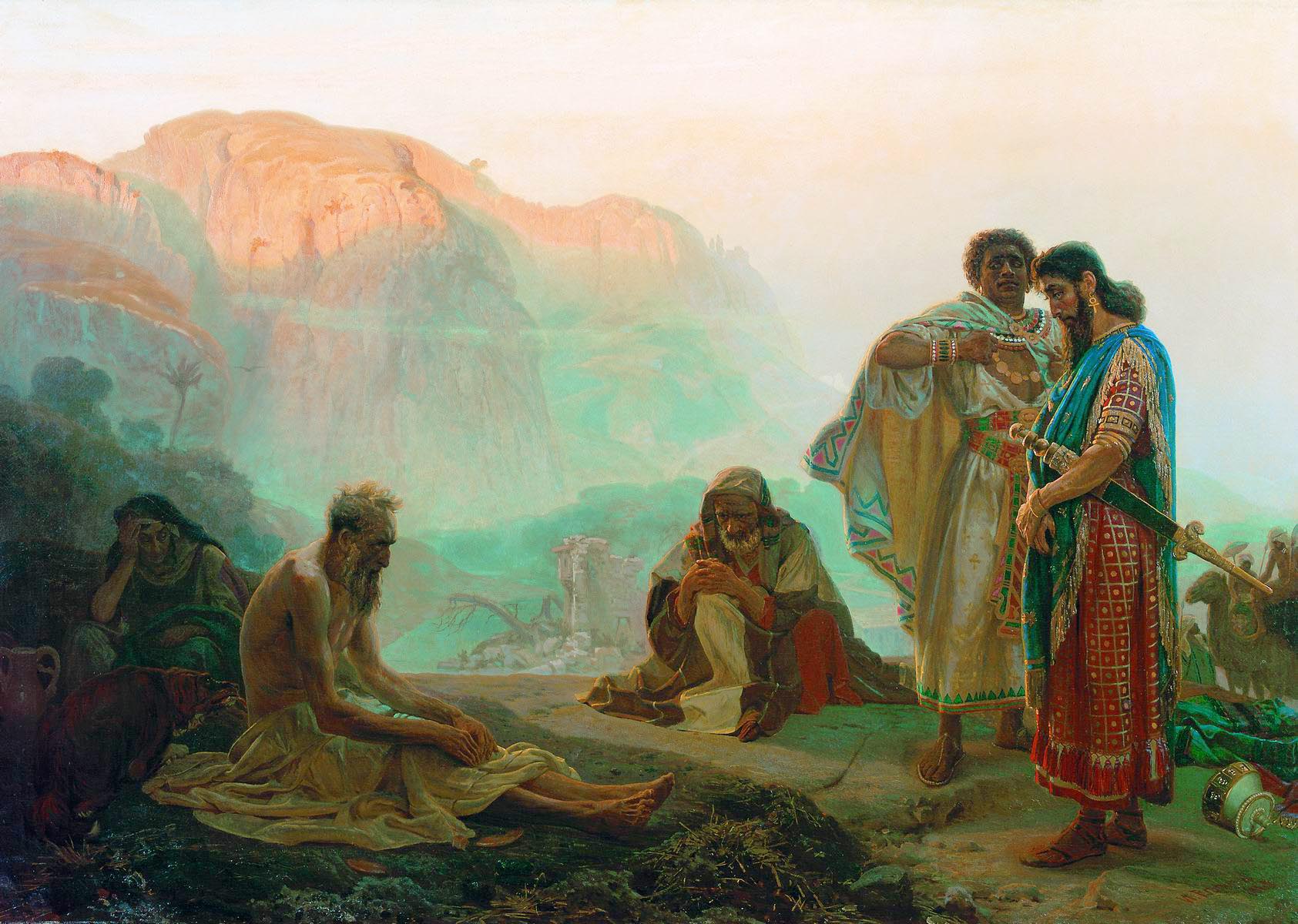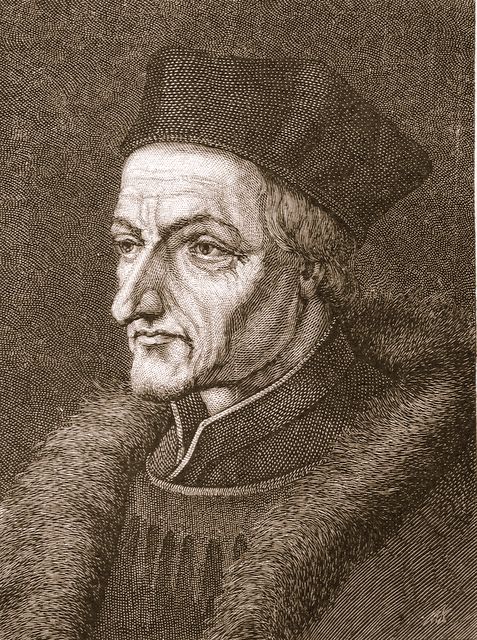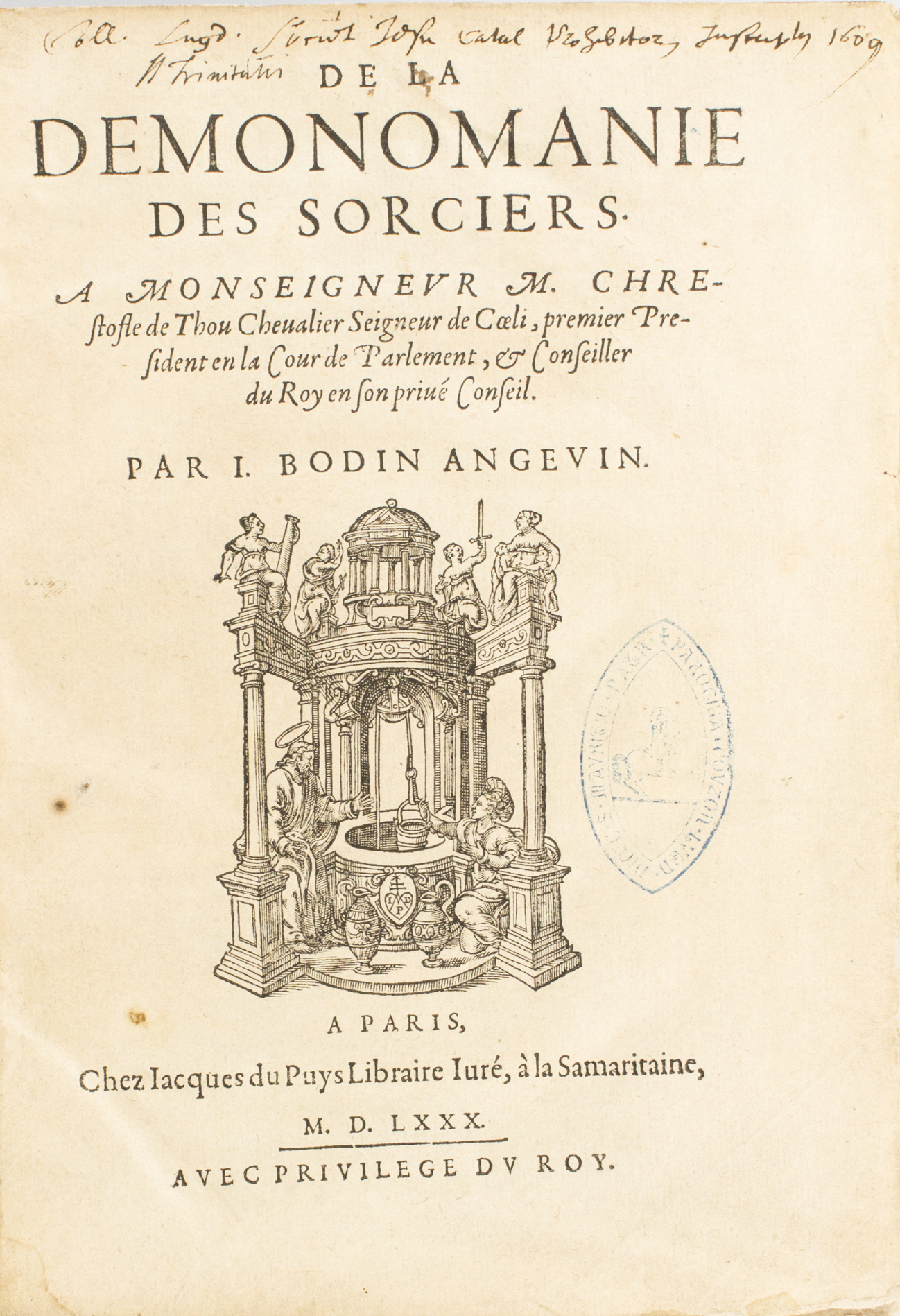|
The Witches (Hans Baldung)
''The Witches'' (formerly titled ''The Witches' Sabbath)'' is a chiaroscuro woodcut by German Renaissance artist Hans Baldung. This woodcut depicts witches preparing to travel to a Witches' Sabbath by using flying ointment. This is the first woodcut produced by Baldung after leaving the studio of his mentor, Albrecht Dürer, and one of the first Renaissance images to depict both witches that fly and a Witches' Sabbath. Surrounded by human bones and animal familiars, a group of witches engage in naked revelry as they soar through the air and prepare food for the Sabbath. The image also contains references to a blasphemy of mass and the witches' libidinous nature. Historical Context This print was created in the city of Strasbourg, where Hans Baldung was working. This is the first print made by Baldung after becoming a master craftsman and leaving Dürer's workshop, as well as the first to feature his initials. These initials can be seen hanging on a tree limb to the center-right e ... [...More Info...] [...Related Items...] OR: [Wikipedia] [Google] [Baidu] |
Hans Baldung
Hans Baldung (1484 or 1485 – September 1545), called Hans Baldung Grien, (being an early nickname, because of his predilection for the colour green), was a painter, printer, engraver, draftsman, and stained glass artist, who was considered the most gifted student of Albrecht Dürer and whose art belongs to both German Renaissance and Mannerism. Throughout his lifetime, he developed a distinctive style, full of colour, expression and imagination. His talents were varied, and he produced a great and extensive variety of work including portraits, woodcuts, drawings, tapestries, altarpieces, and stained glass, often relying on allegories and mythological motifs. Life Early life, c. 1484–1500 Hans was born in Schwäbisch Gmünd (formerly Gmünd in Germany), a small free city of the Empire, part of the East Württemberg region in former Swabia, Germany, in the year 1484 or 1485. Baldung was the son of Johann Baldung, a university-educated jurist, who held the office of leg ... [...More Info...] [...Related Items...] OR: [Wikipedia] [Google] [Baidu] |
Unguent
An unguent is a soothing preparation spread on wounds, burns, rashes, abrasions or other topical injuries (i.e. damage to the skin). It is similar to an ointment, though typically an unguent is oilier and less viscous. It is usually delivered as a semi-solid paste spread on the skin, and it is often oily in order to suspend the medication or other active ingredients. During the Victorian era, the use of the unguent macassar oil on the hair became so popular that antimacassars were invented to prevent damage to furniture.Fleming, John & Hugh Honour. (1977) ''The Penguin Dictionary of Decorative Arts. '' London: Allen Lane, p. 26. Mercurochrome unguent Various preparations of mercurochrome unguent are occasionally used as adjunct therapy in the treatment of furunculosis, and palliative relief of Kaposi sarcomas, although mercurials should only be used in extreme cases due to high toxicity and severe hypersensitivity or idiosyncratic reactions. It was also used by the Egyptians to ... [...More Info...] [...Related Items...] OR: [Wikipedia] [Google] [Baidu] |
Moses
Moses hbo, מֹשֶׁה, Mōše; also known as Moshe or Moshe Rabbeinu (Mishnaic Hebrew: מֹשֶׁה רַבֵּינוּ, ); syr, ܡܘܫܐ, Mūše; ar, موسى, Mūsā; grc, Mωϋσῆς, Mōÿsēs () is considered the most important prophet in Judaism and one of the most important prophets in Christianity In Christianity, the figures widely recognised as prophets are those mentioned as such in the Old Testament and the New Testament. It is believed that prophets are chosen and called by God. This article lists such prophets. The first list bel ..., Prophets and messengers in Islam, Islam, the Druze faith, the Baháʼí Faith and Table of prophets of Abrahamic religions, other Abrahamic religions. According to both the Bible and the Quran, Moses was the leader of the Israelites and Law of Moses, lawgiver to whom the Mosaic authorship, authorship, or "acquisition from heaven", of the Torah (the first five books of the Bible) is attributed. According to the Book of E ... [...More Info...] [...Related Items...] OR: [Wikipedia] [Google] [Baidu] |
Pharaohs In The Bible
The Bible makes reference to various pharaohs ( he, , ''Parʿō'') of Egypt. These include unnamed pharaohs in events described in the Torah, as well as several later named pharaohs, some of whom were historical or can be identified with historical pharaohs. Unnamed pharaohs In the Book of Genesis tells of Abram moving to Egypt to escape a period of famine in Canaan. Abram worries that the unnamed pharaoh will kill him and take away his wife Sarai, so Abram tells her to say she is his sister. They are eventually summoned to meet the pharaoh, but God sends plagues against the pharaoh because of his intention to marry Sarai. After discovering that Sarai is Abram's wife, he releases her and orders Abram to take his belongings and return to Canaan. The final chapters of the Book of Genesis () tell how Joseph, son of Jacob, is sold by his brothers into Egyptian slavery, promoted by the unnamed pharaoh to vizier of Egypt, and later given permission to bring his father, his brother ... [...More Info...] [...Related Items...] OR: [Wikipedia] [Google] [Baidu] |
Job (biblical Figure)
Job ( ; he, אִיּוֹב – ''Īyyōḇ''; gr, Ἰώβ – ''Iṓb'') is the central figure of the Book of Job in the Bible. In rabbinical literature, Job is called one of the prophets of the Gentiles. In Islam, Job ( ar, أيوب, translit= ''Ayyūb'') is also considered a prophet. Job is presented as a good and prosperous family man who is suddenly beset with horrendous disasters that take away all he holds dear—a scenario intended to test Job's faith in God. Struggling mightily to understand this situation, Job reflects on his despair but consistently remains devout. In the Hebrew Book of Job The Hebrew Book of Job is part of Ketuvim ("Writings") of the Hebrew Bible. Not much is known about Job based on the Masoretic Text. The characters in the Book of Job consist of Job, his wife, his three friends (Bildad, Eliphaz, and Zophar), a man named Elihu, God, and angels (one of whom is called Satan, which means 'Adversary'). It begins with an introduction to Jo ... [...More Info...] [...Related Items...] OR: [Wikipedia] [Google] [Baidu] |
Plagues Of Egypt
The Plagues of Egypt, in the account of the book of Exodus, are ten disasters inflicted on Biblical Egypt by the God of Israel in order to convince the Pharaoh to emancipate the enslaved Israelites, each of them confronting Pharaoh and one of his Egyptian gods; they serve as "signs and marvels" given by God to answer Pharaoh's taunt that he does not know Yahweh: "The Egyptians shall know that I am the ". Plagues 1. Turning water to blood: Ex. 7:14–24 2. Frogs: Ex. 7:25–8:11/15 3. Lice or gnats: Ex. 8:12–15/8:16–19 4. Wild animals or flies: Ex. 8:16–28/8:20–32 The fourth plague of Egypt was of creatures capable of harming people and livestock. The Torah emphasizes that the ''‘arob'' (עָרוֹב "mixture" or "swarm") only came against the Egyptians and did not affect the Israelites. Pharaoh asked Moses to remove this plague and promised to grant the Israelites their freedom. However, after the plague was gone, Pharaoh hardened his heart and h ... [...More Info...] [...Related Items...] OR: [Wikipedia] [Google] [Baidu] |
Maleficium (sorcery)
Maleficium (plural: ''maleficia'') as a Latin term, "An act of witchcraft performed with the intention of causing damage or injury; the resultant harm." In general, the term applies to any magical act intended to cause harm or death to people or property. Its modern spelling comes from "Early 17th century; earliest use found in George Abbot (1562–1633), archbishop of Canterbury. From classical Latin maleficium evil deed, injury, sorcery from maleficus + -ium". In general, the term applies to any magical act intended to cause harm or death to people or property. Maleficium can involve the act of poisoning or drugging someone. Practitioners of maleficium are not exclusively females despite depictions in popular culture. Those accused of maleficium were punished by being imprisoned or even executed. Maleficium also used the practice of torture and it was generally considered to be performed through the power of the Devil. Historical opinion of maleficium had been traditionally di ... [...More Info...] [...Related Items...] OR: [Wikipedia] [Google] [Baidu] |
Habakkuk
Habakkuk, who was active around 612 BC, was a prophet whose oracles and prayer are recorded in the Book of Habakkuk, the eighth of the collected twelve minor prophets in the Hebrew Bible. He is revered by Jews, Christians, and Muslims. Almost all information about Habakkuk is drawn from the book of the Bible bearing his name, with no biographical details provided other than his title, "the prophet". Outside the Bible, he is mentioned over the centuries in the forms of Christian and Rabbinic tradition. Name The name Habakkuk, or Habacuc, appears in the Hebrew Bible only in Habakkuk 1:1 and 3:1. In the Masoretic Text, it is written in he, חֲבַקּוּק (Standard ''Ḥavaqquq'' Tiberian ''Ḥăḇaqqûq''). This name does not occur elsewhere. The Septuagint transcribes his name into Greek as (''Ambakoum''), and the Vulgate transcribes it into Latin as ''Abacuc''. The etymology of the name is not clear, and its form has no parallel in Hebrew. The name is possibly related to ... [...More Info...] [...Related Items...] OR: [Wikipedia] [Google] [Baidu] |
Book Of Daniel
The Book of Daniel is a 2nd-century BC biblical apocalypse with a 6th century BC setting. Ostensibly "an account of the activities and visions of Daniel, a noble Jew exiled at Babylon", it combines a prophecy of history with an eschatology (a portrayal of end times) both cosmic in scope and political in focus, and its message is that just as the God of Israel saves Daniel from his enemies, so he would save all Israel in their present oppression. The Hebrew Bible includes Daniel in the ''Ketuvim'' (writings), while Christian biblical canons group the work with the Major Prophets. It divides into two parts: a set of six court tales in chapters 1–6, written mostly in Aramaic, and four apocalyptic visions in chapters 7–12, written mostly in Hebrew; the deuterocanonical books contain three additional sections, the Prayer of Azariah and Song of the Three Holy Children, Susanna, and Bel and the Dragon. The book's influence has resonated through later ages, from the community of ... [...More Info...] [...Related Items...] OR: [Wikipedia] [Google] [Baidu] |
Johann Geiler Von Kaisersberg
Johann Geiler von Kaysersberg (16 March 1445 – 10 March 1510) was a priest, considered one of the greatest of the popular preachers of the 15th century. He was closely connected with the Renaissance humanists of Strasbourg, whose leader was the well-known Jakob Wimpfeling (1450–1528), called "the educator of Germany". Like Wimpfeling, Geiler was a secular priest; both fought the ecclesiastical abuses of the age, but not in the spirit of Martin Luther and his adherents. They looked, instead, for salvation and preservation only in the restoration of Christian morals in Church and State through the faithful maintenance of the doctrines of the Church. However the moral reforms of Johann Geiler layed the groundwork for the Protestant reformation in Strasbourg. Early life and education He was born at Schaffhausen, but from 1448 passed his childhood and youth at Kaysersberg in Upper Alsace. His grandfather, who brought him up, lived there. The father was killed by a hunting-acci ... [...More Info...] [...Related Items...] OR: [Wikipedia] [Google] [Baidu] |
Jean Bodin
Jean Bodin (; c. 1530 – 1596) was a French jurist and political philosopher, member of the Parlement of Paris and professor of law in Toulouse. He is known for his theory of sovereignty. He was also an influential writer on demonology. Bodin lived during the aftermath of the Protestant Reformation and wrote against the background of religious conflict in France. He seemed to be a nominal Catholic throughout his life but was critical of papal authority over governments and there was evidence he may have converted to Protestantism during his time in Geneva. He favoured the strong central control of a national monarchy as an antidote to factional strife. Towards the end of his life he wrote a dialogue among different religions, including representatives of Judaism, Islam and natural theology in which all agreed to coexist in concord, but was not published. Life Bodin was successively a friar, academic, professional lawyer, and political adviser. An excursion as a politician having ... [...More Info...] [...Related Items...] OR: [Wikipedia] [Google] [Baidu] |
Gianfrancesco Ponzinibio
Gianfrancesco Ponzinibio () was a European jurist who criticized the relatively new change in Christian doctrine that had become popular in the 15th century especially among Dominican Order, Dominican inquisitors and that espoused a belief in the real supernatural power of witchcraft. Ponzinibio argued in favor of maintaining the ancient Christian theology as stated in the Canon Episcopi, canon ''Episcopi''. Ponzinibio's views soon came under attack by witch-phobic theologians like the Dominican Sylvester Mazzolini, Silvestro Mozzolino of Prierio (later Dominican General) who in 1521 published a work that did not attempt to defy the canon ''Episcopi'' but stating his opinion that to deny the real power of witchcraft would be "to discredit the infinite number of cases tried by the Inquisition, and consequently to discredit the laws themselves." Other critics of Ponzinibio soon followed including Bartolomeo de Spina, who devoted three tracts to refuting Ponzinibio's arguments and cal ... [...More Info...] [...Related Items...] OR: [Wikipedia] [Google] [Baidu] |










